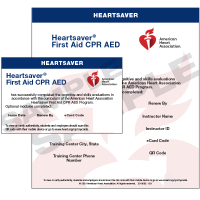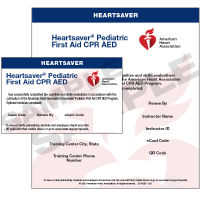
Use this discount promo code for $30 off any of the American Heart Association Courses.
Promo Code: AHA30
Lowest Prices in Northern California – Guaranteed.
Courses Are offered In 65 cities across Northern California.
Receive Your Certification Card On Day of Class
Courses Offered Daily and On Weekends
In Business Since 1989



CPR, BLS, ACLS, and PALS Certification Courses: Building Confidence and Saving Lives
Learning how to respond effectively in an emergency is one of the most empowering skills a person can acquire. Whether you’re a healthcare professional, a teacher, a coach, or simply a caring family member, CPR, BLS, ACLS, and PALS certification courses provide the knowledge and confidence needed to save lives when seconds matter. These programs go beyond classroom theory, offering hands-on training and real-life scenarios that prepare participants for the unexpected.
Cardiopulmonary Resuscitation (CPR) is the cornerstone of all life-saving techniques. It teaches individuals how to keep oxygenated blood flowing to vital organs during cardiac arrest. CPR training focuses on the essential steps of recognizing cardiac emergencies, calling for help, and performing chest compressions with proper depth and rate. Participants also learn rescue breathing and how to use an automated external defibrillator (AED) to restore a normal heart rhythm.
While CPR is often associated with healthcare settings, it’s just as important for the general public. Parents, teachers, fitness instructors, and community members benefit from understanding these life-saving actions. A properly performed set of compressions can mean the difference between life and death before emergency medical personnel arrive. CPR certification courses often include adult, child, and infant techniques, ensuring that students can respond appropriately to emergencies involving people of all ages.
Basic Life Support (BLS) training builds on CPR skills with additional emphasis on team dynamics, advanced airway management, and the use of barrier devices. BLS is primarily designed for medical professionals—such as nurses, paramedics, doctors, dental staff, and hospital personnel—but it’s also valuable for first responders and anyone working in a healthcare environment.
During BLS courses, participants practice high-quality CPR in both single- and multi-rescuer situations. They learn to recognize respiratory and cardiac arrest, respond with coordinated teamwork, and apply AED use seamlessly within resuscitation efforts. The goal is to deliver consistent, high-quality care in high-pressure scenarios where communication and precision can determine outcomes.
BLS certification is often required for employment in medical or clinical settings, but it also instills a lifelong ability to stay calm, think critically, and take decisive action during emergencies.
Advanced Cardiac Life Support (ACLS) is designed for healthcare professionals who manage cardiac arrest or other cardiovascular emergencies. It’s a more complex, scenario-based course that requires strong foundational knowledge in BLS and an understanding of cardiac rhythms, pharmacology, and airway management.
ACLS participants learn to interpret electrocardiograms (ECGs), identify arrhythmias, and administer appropriate medications. The training emphasizes systematic approaches to acute emergencies, including algorithms for treating conditions such as ventricular fibrillation, pulseless electrical activity, and asystole.
One of the key components of ACLS is leadership—each team member has a defined role, but the team leader must direct actions effectively and make rapid decisions under pressure. The course encourages clear communication, prioritization, and collaboration among team members, ensuring a coordinated and efficient response to cardiac crises.
Successful completion of ACLS certification demonstrates a provider’s readiness to handle advanced cardiovascular emergencies in hospitals, clinics, and pre-hospital environments.
While ACLS focuses on adult patients, Pediatric Advanced Life Support (PALS) addresses the unique needs of infants and children experiencing life-threatening emergencies. Pediatric physiology, medication dosages, and cardiac rhythms differ significantly from adults, requiring specialized training and attention to detail.
PALS certification equips healthcare professionals with the skills to recognize respiratory distress, shock, and cardiac arrest in children. The course emphasizes early intervention—identifying and treating problems before they progress to full arrest. Participants learn advanced airway management techniques, pediatric rhythm recognition, and the use of appropriate equipment sized for children.
In addition to clinical knowledge, PALS fosters compassionate care and family-centered communication. When treating young patients, healthcare teams must balance technical proficiency with empathy and emotional support for both the child and family. PALS certification ensures that providers are fully prepared to meet these challenges with confidence and precision.
Modern certification programs go beyond lectures and textbooks. They utilize interactive learning modules, realistic manikins, and simulation technology to replicate real-life emergency scenarios. Students can practice chest compressions with feedback devices that measure depth and rate, ensuring skills meet current standards. Simulation stations and blended learning formats allow participants to train at their own pace while still receiving high-quality, hands-on experience.
Instructors encourage repetition and mastery through feedback, helping learners build muscle memory and confidence. Whether practicing as a solo rescuer or within a coordinated team, students leave prepared to act decisively in actual emergencies.
CPR, BLS, ACLS, and PALS certifications are required for a wide range of professionals. Hospitals, clinics, fire departments, dental offices, and schools often mandate that their staff maintain valid certification. Beyond regulatory compliance, many employers view these credentials as essential qualifications that reflect responsibility and commitment to patient safety.
Even those outside the healthcare field can benefit. Teachers, coaches, security guards, and child care workers are often the first to respond in emergencies. Having trained individuals on-site increases the survival rate of victims experiencing cardiac arrest or respiratory failure.
Life-saving skills must be practiced and refreshed regularly. Certification cards typically remain valid for two years, after which individuals must complete renewal courses to maintain their credentials. Frequent practice ensures that critical steps become second nature, preventing hesitation when seconds count.
Refresher training also introduces the latest updates in resuscitation science, ensuring participants stay current with evolving best practices. With rapid advancements in medical technology and research, continuous learning is key to maintaining excellence in emergency response.
Taking a CPR, BLS, ACLS, or PALS certification course is more than a professional requirement—it’s a commitment to saving lives and improving community safety. Each course level builds upon the previous one, offering deeper knowledge and practical skills that can make a difference in moments of crisis.
From the first compression to the final pulse check, certified individuals play a vital role in emergency care systems. These programs empower people to act, transform fear into focus, and bring hope when it’s needed most.
No matter where or how you serve—at home, in a clinic, or out in the field—your training ensures that when an emergency strikes, you’re ready.